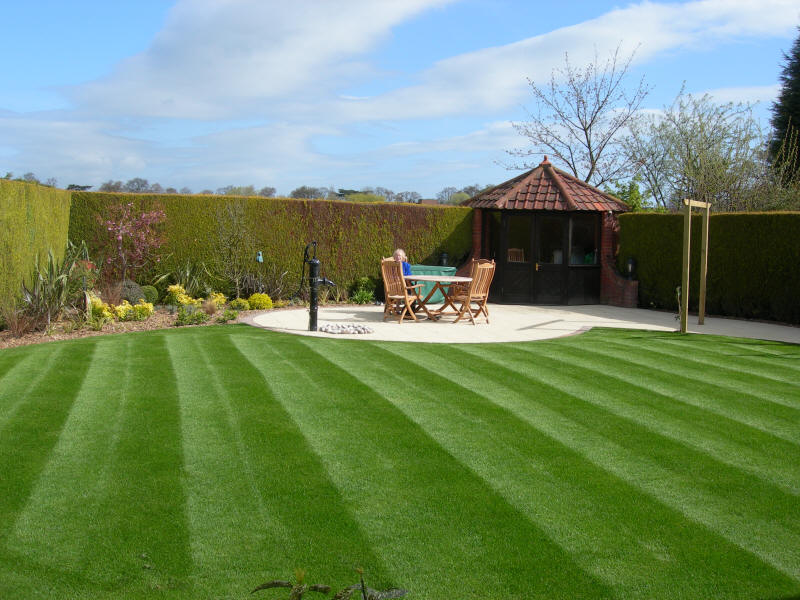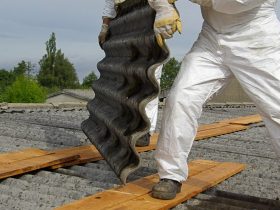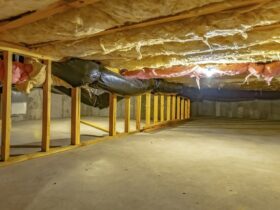Last winter was a bit harsh. Now, on this nice spring day, you are surveying your lawn to determine what work needs to be done.
As you walk around your yard, you notice that a thick layer of thatch has grown in some parts of the lawn.
But what exactly is thatch?
Contrary to what some homeowners may believe, thatch is not comprised of grass clippings left behind on the lawn.
According to a lawn care expert in McLean, VA, you should continue to leave grass clippings on your lawn after each mowing session because these decompose easily and provide the grass with much needed nutrients.
If the grass clippings are not the culprit, what is causing the buildup of thatch?
Thatch is composed of both dead and living organic matter. Specifically, it is composed of stems, crowns, and roots which do not decompose easily.
Not necessarily a bad thing
Just because there is thatch on your lawn, it does not mean that you have a problem at hand.
In fact, a thin layer of thatch can be beneficial to a lawn. This small amount of thatch provides your lawn protection from temperature and soil moisture swings.
Additionally, a thin layer of thatch protects the grass from both foot and vehicular traffic.
Too much of a good thing
However, if left unchecked, a thick layer of thatch can lead to several problems.
- During summer, thatch can heat up the soil and lead to grass roots drying out.
- Once the rains come in, thick thatch can hold a significant amount of moisture, which leads to the grass roots becoming deprived of much-needed oxygen.
- Apart from these, thatch can serve as a home for harmful microorganisms and pests.
- Finally, a thick layer of thatch makes the lawn susceptible to scalping. When there too much thatch on the lawn, a lawn mower could sink lower into the turf, cutting off more from the grass blades than you intended to.
In an ideal scenario, the rate of thatch buildup should be the same as its rate of decay. This situation ensures that the lawn is protected while microbial activity is promoted.
Problems arise when the rate of decay is slower than the rate of thatch buildup.
How thick layers of thatch develop
What are the factors that contribute to the disparity of these rates?
According to a lawn care professional from Fairfax, VA, there are a few critical factors that contribute to this issue.
These factors include:
Turf species. Some species, including Kentucky bluegrass and creeping red fescue, are particularly susceptible to the buildup of thick layers of thatch.
Acidic soil. When the pH level of the soil in a yard is 5.5 or lower, microbial activity slows down. This translates to the slower decomposition of the organic matter which comprises the thatch.
Over-application of pesticides. Areas where too much pesticide is applied are more vulnerable to quicker thatch buildup. Pesticides can harm beneficial creatures like earthworms that encourage microbial activities. Fungicides, on the other hand, promote the rapid growth of the living matter found in the thatch.
Over-fertilization. Nitrogen, in particular, can facilitate the faster buildup of thatch because it increases the rate of growth in the roots and stems found in thatch. Additionally, nitrogen can make soils acidic.
Preventing thatch buildup from becoming a problem
The prevention of thick thatch buildup entails different approaches.
- For one, you have to choose the right type of turf for your lawn. Use aggressive species like Kentucky bluegrass for areas with heavy traffic. For other areas, choose slower growing species to keep thatch buildup at a manageable level.
- Make it a habit to have your soil tested. And if the test indicates that the soil is acidic, an application of lime can raise its pH level.
- Apart from preventing the aggressive buildup of thatch, core aeration also facilitates microbial activity and air movement in the soil.
- Make sure that you carefully follow the instructions on the labels of fertilizers and pesticides before applying these.
Thatch can be removed manually or with the use of power rakes. For most experts, thatch buildup becomes excessive when it reaches two inches or more. Ideally, the removal of thatch should be done at the tail end of summer or at the start of fall.
By following these measures, you can ensure that only the most beneficial amount of thatch is kept on your lawn at all times.









